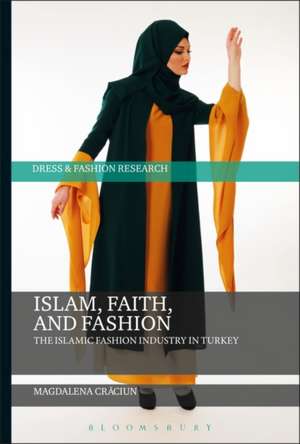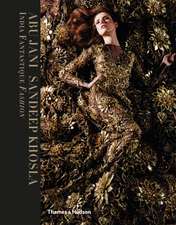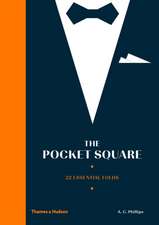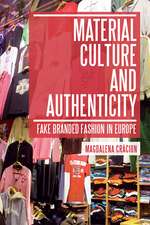Islam, Faith, and Fashion: The Islamic Fashion Industry in Turkey: Dress and Fashion Research
Autor Magdalena Craciunen Limba Engleză Hardback – 6 sep 2017
| Toate formatele și edițiile | Preț | Express |
|---|---|---|
| Paperback (1) | 229.59 lei 6-8 săpt. | |
| Bloomsbury Publishing – 20 mar 2019 | 229.59 lei 6-8 săpt. | |
| Hardback (1) | 598.02 lei 6-8 săpt. | |
| Bloomsbury Publishing – 6 sep 2017 | 598.02 lei 6-8 săpt. |
Preț: 598.02 lei
Preț vechi: 858.33 lei
-30% Nou
Puncte Express: 897
Preț estimativ în valută:
114.43€ • 119.47$ • 94.71£
114.43€ • 119.47$ • 94.71£
Carte tipărită la comandă
Livrare economică 05-19 aprilie
Preluare comenzi: 021 569.72.76
Specificații
ISBN-13: 9781474234375
ISBN-10: 1474234372
Pagini: 200
Ilustrații: 12 bw illus
Dimensiuni: 156 x 234 x 16 mm
Greutate: 0.5 kg
Editura: Bloomsbury Publishing
Colecția Bloomsbury Academic
Seria Dress and Fashion Research
Locul publicării:London, United Kingdom
ISBN-10: 1474234372
Pagini: 200
Ilustrații: 12 bw illus
Dimensiuni: 156 x 234 x 16 mm
Greutate: 0.5 kg
Editura: Bloomsbury Publishing
Colecția Bloomsbury Academic
Seria Dress and Fashion Research
Locul publicării:London, United Kingdom
Caracteristici
Furthering the academic discussion of fashion and religion, this book builds upon key texts published by Bloomsbury to bring awareness to the issues surrounding Islamic fashion in contemporary society
Notă biografică
Magdalena Craciun obtained her PhD in Anthropology at University College London in 2010, working under Daniel Miller. She carried out fieldwork in Romania and Turkey, and her research interests include dress, fashion, Islamic fashion, materiality, authenticity, brands, fakes, markets, Eastern Europe, and Turkey.
Cuprins
List of IllustrationsAcknowledgements 1. Introduction2. The veiling debates: Islamic dress, Islamist headscarves and Islamic fashion3. A sector with flexible boundaries4. Headscarf-wearing fashion professionals5. Fashionable garments6. Fashion images7. Becoming fashion professionals8. Conclusion BibliographyIndex
Recenzii
The author has chosen the Islamic headscarf, a seemingly mundane garment, and transformed it into an interesting study, putting forth compelling arguments regarding the complexities of its production and consumption and the intersections of fashion, religion, politics and economics.



















